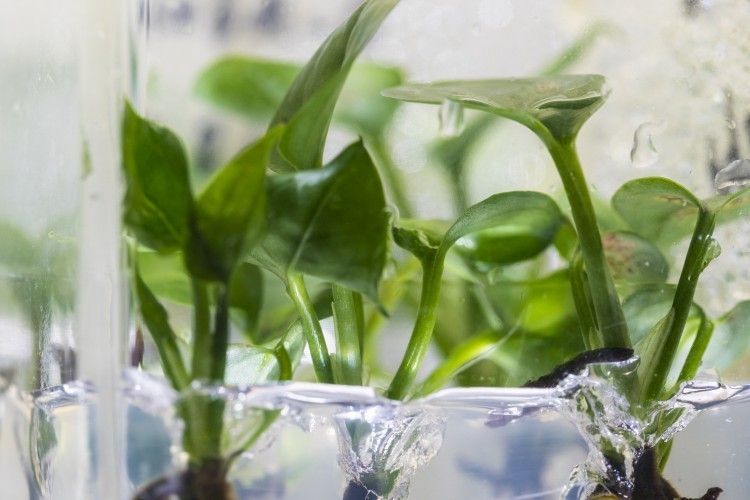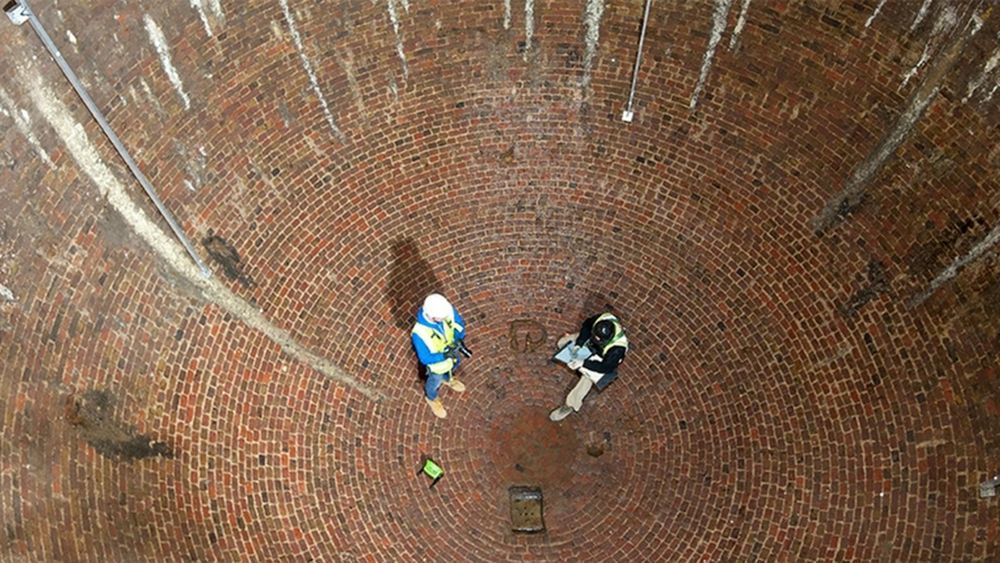Archive for the ‘habitats’ category: Page 95
Jan 25, 2019
Volvo creates the living seawall in Sydney to help with plastic pollution
Posted by Genevieve Klien in categories: habitats, materials
Volvo is trying to help the problem of plastic pollution in the oceans by creating the Living Seawall, a new, creative approach to providing a habitat for marine life.
Jan 24, 2019
Complete Axolotl Genome Could Pave the Way Toward Human Tissue Regeneration
Posted by Paul Battista in categories: biotech/medical, business, habitats, neuroscience
The adorable and enigmatic axolotl is capable of regenerating many different body parts, including limbs, organs, and even portions of its brain. Scientists hope that a deeper understanding of these extraordinary abilities could help make this kind of tissue regeneration possible for humans. With news today of the first complete axolotl genome, researchers can now finally get down to the business of unraveling these mysteries.
Axolotls are tiny aquatic salamanders whose only native habitat is a lake near Mexico City. Many animals, such as frogs, sea stars, and flatworms, are capable of tissue regeneration, but the axolotl is unique in that it can regenerate many different body parts over the course of its entire life cycle, including limbs, tail, heart, lungs, eyes, spinal cord, and up to half of its brain.
Jan 9, 2019
Asteroid-circling spacecraft grabs cool snapshot of home
Posted by Genevieve Klien in categories: habitats, space travel
CAPE CANAVERAL, Fla. (AP) — An asteroid-circling spacecraft has captured a cool snapshot of home.
NASA’s Osiris-Rex spacecraft took the picture days before going into orbit around asteroid Bennu on New Year’s Eve.
The tiny asteroid — barely one-third of a mile (500 meters) across — appears as a big bright blob in the long-exposure photo released last week. Seventy million miles (110 million kilometers) away, Earth appears as a white dot, with the moon an even smaller dot but still clearly visible.
Jan 8, 2019
DARPA wants to build an AI to find the patterns hidden in global chaos
Posted by Carse Peel in categories: climatology, habitats, robotics/AI
That most famous characterization of the complexity causality, a butterfly beating its wings and causing a hurricane on the other side of the world, is thought-provoking but ultimately not helpful. What we really need is to look at a hurricane and figure out which butterfly caused it — or perhaps stop it before it takes flight in the first place. DARPA thinks AI should be able to do just that.
A new program at the research agency is aimed at creating a machine learning system that can sift through the innumerable events and pieces of media generated every day and identify any threads of connection or narrative in them. It’s called KAIROS: Knowledge-directed Artificial Intelligence Reasoning Over Schemas.
“Schema” in this case has a very specific meaning. It’s the idea of a basic process humans use to understand the world around them by creating little stories of interlinked events. For instance when you buy something at a store, you know that you generally walk into the store, select an item, bring it to the cashier, who scans it, then you pay in some way, and then leave the store. This “buying something” process is a schema we all recognize, and could of course have schemas within it (selecting a product; payment process) or be part of another schema (gift giving; home cooking).
Continue reading “DARPA wants to build an AI to find the patterns hidden in global chaos” »
Jan 6, 2019
Here’s what the Red Planet could look like if humans were to live on Mars
Posted by Klaus Baldauf in categories: habitats, space
SPECIALISTS have unveiled prototypes for human homes on a Martian colony after research revealed one in ten Brits would move to the Red Planet tomorrow if they could.
Architectural experts produced plans for three distinct dwellings fit for Mars: an apartment aimed at young professionals, a family home and a luxury mansion.
Each is designed to protect interplanetary homeowners from hazardous cosmic rays, space radiation and Mars’ severe dust storms, as well as insulate them from the cold.
Continue reading “Here’s what the Red Planet could look like if humans were to live on Mars” »
Jan 2, 2019
Scientists have combined a house plant with a rabbit gene. This is why
Posted by Genevieve Klien in categories: biotech/medical, habitats, sustainability
Scientists at the University of Washington (UW) may have found an unexpected way to tackle persistent indoor air pollution: a common houseplant modified with rabbit DNA.
Researchers wanted to find a way to remove the toxic compounds chloroform and benzene from the home, a UW press release explained. Chloroform enters the air through chlorinated water and benzene comes from gasoline and enters the home through showers, the boiling of hot water and fumes from cars or other vehicles stored in garages attached to the home. Both have been linked to cancer, but not much has been done to try and remove them. Until now.
“People haven’t really been talking about these hazardous organic compounds in homes, and I think that’s because we couldn’t do anything about them,” senior study author and UW civil and environmental engineering department research professor Stuart Strand said in the release. “Now we’ve engineered houseplants to remove these pollutants for us.”
Continue reading “Scientists have combined a house plant with a rabbit gene. This is why” »
Dec 30, 2018
Singularity Hub’s Top Articles of the Year
Posted by Mike Ruban in categories: 3D printing, habitats, robotics/AI
As 2018 draws to a close and we start anticipating the developments that will happen in 2019, here’s a look back at our ten most-read articles of the year.
This 3D Printed House Goes Up in a Day for Under $10,000 Vanessa Bates Ramirez | 3/18/18 “ICON and New Story’s vision is one of 3D printed houses acting as a safe, affordable housing alternative for people in need. New Story has already built over 800 homes in Haiti, El Salvador, Bolivia, and Mexico, partnering with the communities they serve to hire local labor and purchase local materials rather than shipping everything in from abroad.”
Machines Teaching Each Other Could Be the Biggest Exponential Trend in AI Aaron Frank | 1/21/18 “Data is the fuel of machine learning, but even for machines, some data is hard to get—it may be risky, slow, rare, or expensive. In those cases, machines can share experiences or create synthetic experiences for each other to augment or replace data. It turns out that this is not a minor effect, it actually is self-amplifying, and therefore exponential.”
Dec 28, 2018
Enormous 18th-Century Ice House Re-Discovered Under London Street
Posted by Genevieve Klien in category: habitats
Archaeologists in London have re-discovered a subterranean ice house near Regent’s Park. Dating back to the 1780s, the egg-shaped cavern was used to store ice, which was imported from as far away as Norway.
Made from brick, the structure would have been one of the largest of its kind at the time, according to the Museum of London Archaeology (MOLA). The egg-shaped chamber measures 25 feet (7.5 meters) wide and 31 feet (9.5 meters) deep. Archaeologists with MOLA found the ice house, also known as an ice well, along with its entrance chamber and vaulted ante-chamber, during preparations for the development of the Regent’s Crescent residential project.


















